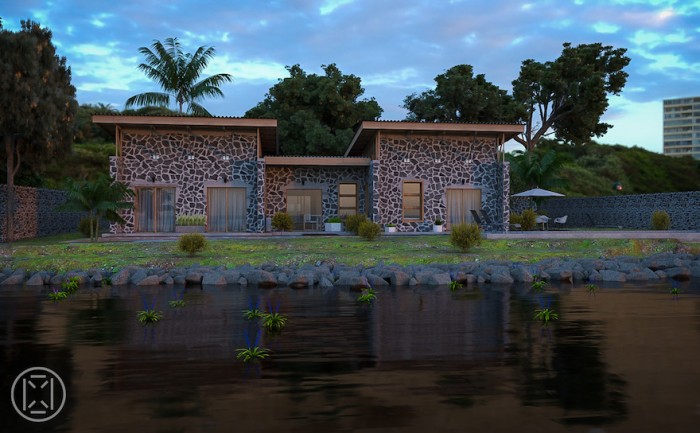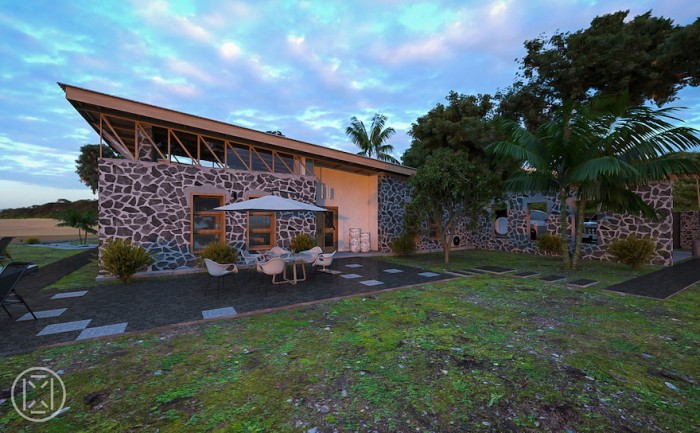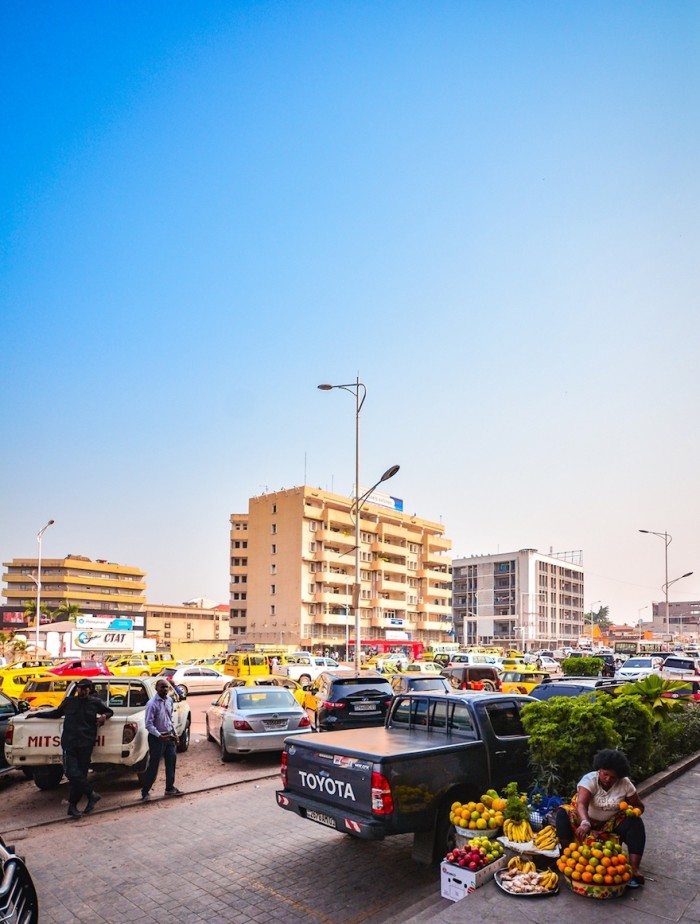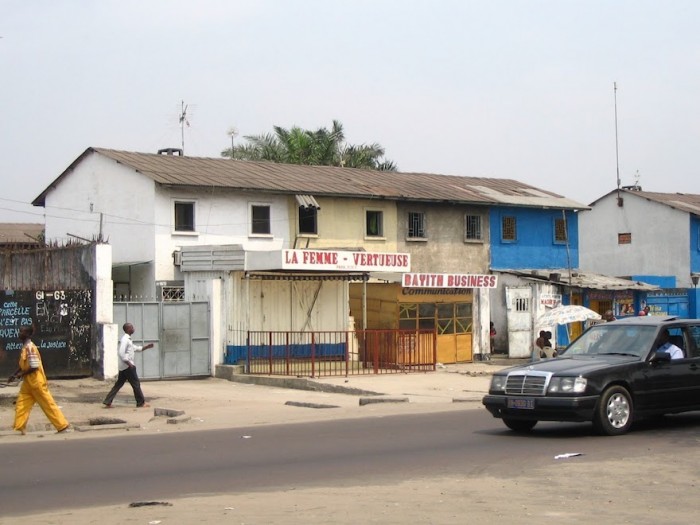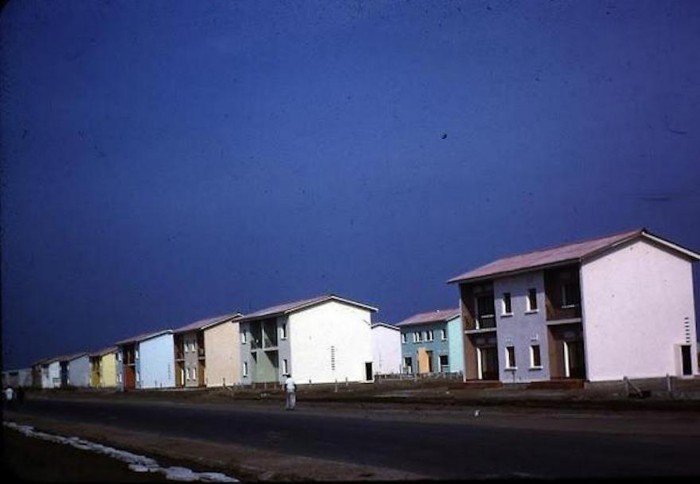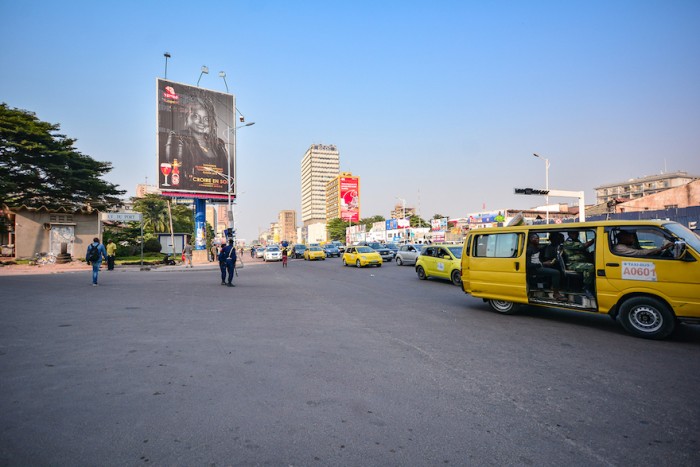What many people don't know is that there are eight volcanoes located between Rwanda, Uganda and the Democratic Republic of the Congo (DRC). And according to NASA, one of these volcanoes, the Nyiragongo, which is located in Goma in the DRC, has the world’s fastest flowing lava.
So when this particular volcano erupted in 2002, it displaced about half a million residents in Goma, which shares a border, as well as Lake Kivu, with Rwanda. Now 17 years after the eruption, residents, including designer Nicolas-Patience Basabose, are using the leftover volcanic stones, for building projects.
Basabose, who left a career in advertising and media to start Basabose Studio, which he runs between the DRC and South Africa, says he has been working on Villa Nyirangongo I and II for the past few years.
“The story of the 2002 eruption was the driving force behind the concept and the use of volcanic stones as main construction material. Convincing the client was not easy, because across Africa, aesthetics are for many people not as important as making a social statement. Mariam Kamara once talked about how people relate to their houses and the choice of materials in her country, and it’s almost the same in Congo. Many people prefer to use what they see as “modern” materials rather than green and responsible choices, because it’s all about the appearance,” he says via email.
Residents often use stone as cheap material for fences. So, building a house out of the freely available stones is seen as a “stamp of poverty” by many.
Basabose and his team are using local Portland cement which is a mixture of Nyiragongo stones, dust and ashes. The wood is also sourced from trees in the area. He says the home is their greenest to date, as 95 per cent of materials were sourced from within a 5km radius.
“Now the trick for us was to convince the client by designing a small contemporary cabin using realistic renders (first coat of plaster) in order to win them over. And when you throw in the almighty advantage of how much that will cut the cost of the whole building, things worked out better for all parties involved, the environment included.”
He says designing customised houses in the DRC requires both social and cultural sensitivity, which is why they wanted this home to be an ode to the Goma region itself.
Goma and its neighbouring city, Bakavu, are perhaps best known for the mountain gorillas in the region – these attract tourists who pay thousands of US dollars to walk among these animals, and also to sleep at the foot of the volcanoes.
“These cities are both on the banks of Lake Kivu and they have a maritime transport network between them. That makes them special, because other cities in the Congo are just connected by road or by river. The eternally green hills of the Masisi plains is what gave the area the nickname of Switzerland of Africa. This is a must-see for visitors.”
But the history of architecture in the DRC is closely tied with developments in the country that date back to the 1800s when it was colonised by the Belgians.
Following an uprising by residents in the 1960s, Belgium withdrew from this country, leading to the country’s independence. But independence was also followed by two wars. The country was renamed Zaire, later DRC, and conflict in the country continues to this day.
So what does post-colonial architecture look like now?
“Architecture in Congo has a strange, but fascinating identity. Post-colonial architecture was probably at its most exciting when Congolese architects found themselves in the middle of the massive political movement launched by Mobutu [Sese Seko] in Zaïre (former name of DR Congo). It was an interesting period as far as architecture was concerned," Basabose says.
For example in 1966, Mobutu’s “recours à l'authenticité” (the return to authenticity) doctrine began, and it was aimed at erasing all traces of Belgian colonialism.
Writing in the journal of architectural education, Johan Lagae and Kim De Raedt traced the impact of this on the work of Italian architect, Eugène Palumbo, who designed several iconic public buildings under Mobutu's reign.
The authors argue that Palumbo's projects highlighted the tension of an architect seeking to develop an architectural language evoking both “authentic” Congolese culture and notions of progress and modernity.
Basabose says the doctrine established a new and radical visual representation of the Congolese society.
“Architects played an important role in defining those characteristics to the citizens with memorable and monumental architecture of buildings, public places, monuments and even new neighbourhoods built by the masters of the time, namely Eugène Palumbo and Fernand Tala-Ngai, and others of their generation. They were the fathers of post-colonial Congolese architecture. They developed a version of the Modernist/Art Nouveau movement with a distinct quest for iconicity rooted in ancestral imagery or visual references.”
For residents this meant that their social habits were accommodated. Homes were designed to accommodate the Congolese way of life as opposed to Belgian norms. Climate was also a key factor, as residents spend most of their days outdoors due to the weather. This means that most activities in the home take place in the courtyard.
He says that the Belgians had misinterpreted this to mean that people lived mostly outside.
In building social housing, they did not separate the compounds, which made it uncomfortable for families, as they now had to live side by side with little space in between them.
“Locals had to modify those houses by building fences and ‘paillottes’ for outdoor seating. By recreating boundaries, this helped to restore a balance of shared social life. The public, semi-public and private spaces are part of our social and cultural order. Some boundaries are not physical as you would expect in other places, but we culturally know where to go and where not to go in someone’s compound.
“All these elements helped develop the new habitat in an urban context where ancestral settlements built along clan lines in the rural areas were replaced by houses and compounds shared by diverse groups of people in the urban context. Being deeply conservative, the Congolese society took architecture as a definer of those ancient values rather than their modifier. Buildings adapted to how we’ve always lived and not the other way around.
“This is probably one of the reasons a city such as Kinshasa, being 70% unplanned, managed to contain itself, where compounds became villagettes and many families from different regions managed to define shared values for cohabitation.”
More on architecture:
Annabelle Selldorf on architecture's responsibility beyond the building

